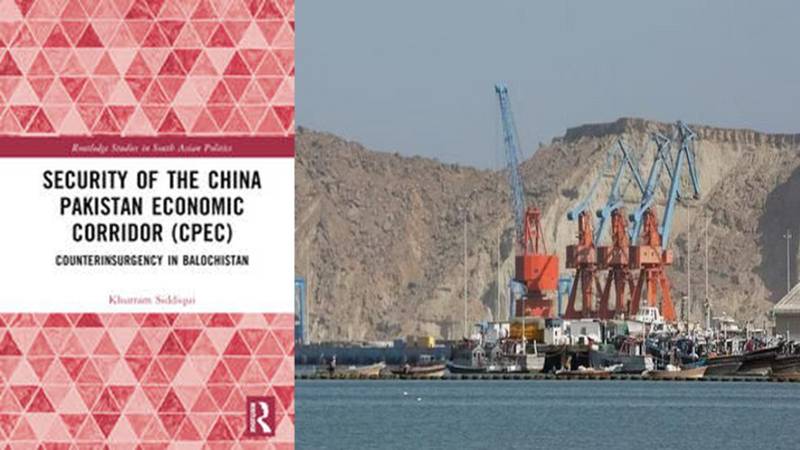
Launched in 2015, the China-Pakistan Economic Corridor (CPEC) has been regarded by Beijing as a “flagship project” of the Belt and Road Initiative and by Islamabad as an “economic game changer.” Its security in the insurgency-prone Balochistan province is thus a matter of great concern for both governments. However, this aspect of CPEC is seriously understudied because of security restrictions that limit access to the region and to operational and administrative details. Dr Siddiqui’s work breaks new ground in examining the Pakistan military’s evolving counter-insurgency response in the region.
The volume is an essential resource for both considering the security threats to the implementation of CPEC and how its extension into the poverty ridden Balochistan region has impacted long-standing resistance to the Pakistan state. The nationalists’ sense that Balochistan’s rich resources have been exploited for the benefit of Punjabi interests rather than those of local people have been intensified. At the same time the growing presence of Chinese workers has provided a target for Islamic militants who are committed to the Uighur cause. It is not just armed insurgents who have responded to the socio-economic and environmental consequences of the development of the Gwadar port, but also new social and political movements particularly Maulana Hidayatur Rehman’s Haq Do Tehreek which has established an influential presence on the Makran coast.
The volume provides the reader with both a historical overview of insurgency in Balochistan (pp. 5-10) and a detailed examination of the contemporary insurgent landscape. It contains important insights (pp. 101-108; 116.) into the alliances and activities of Islamic State Khorasan Province, Lashkar-e-Jhangvi and the three main ethno-nationalist armed groups Balochistan Liberation Army, Balochistan Liberation Front ad Balochistan Republican Army.
There is an equally careful analysis of the Pakistan military’s response to the five rounds of insurgency that have occurred in Balochistan. The account traces its evolution from a colonial era legacy of “butcher and bolt” to a Sub-Conventional Warfare Doctrine espoused by General Ashfaq Parvez Kiyani (Chief of Army Staff 2007-13). The author theoretically grounds this new approach in the three pillars of counterinsurgency model of David Kilcullen (pp. 24-28) a senior strategist and counter-insurgency advisor to both General David Petraeus and US Secretary of State Condoleezza Rice. He provides interesting material both on Psy Ops initiatives (p. 135 & ff) and the Khushal Balochistan Programme (159-161).
Pakistan’s economic position has become more perilous since much of the volume’s research and writing was undertaken. This has increased the reliance on CPEC to provide much needed infrastructural development and reduce an expensive energy bill that is one of the factors worsening the balance of payments situation. At the same time mounting economic problems reduce funding for security measures in Balochistan. There is some reference to this in the text with respect manpower shortages, and delays in completing of the fencing the porous border with Afghanistan and Iran (pp. 150-151).
Dr Siddiqui points out the resurgent militant threat towards the end of his account (p.147; p.179) but concludes his assessment of the effectiveness of the Pakistan Army’s counterinsurgency strategy on an optimistic note. Declaring that, “the existing security, political and economic situation in Balochistan has improved” (p.181). Current developments raise questions about the sustainability of some of the developments, the volume has carefully delineated, including progress on disappearances (pp.143; 153-154). The first quarter of 2024 has seen a marked rise in incidents of terror attacks and counter-terror operations in Balochistan, second only to the increase in KP. In the latter’s Shangla district, a suicide bombing in March killed five Chinese workers travelling to the Dasu power project. Earlier in the month, insurgents from the Balochistan Liberation Army attacked the Gwadar Port Authority. Militants also attacked the PNS Siddique naval base. Despite the assurances of a leading military figure (p.154) public hostility to missing persons and the issue of “extra-judicial” killings in police custody erupted once again in the response to the killing of Balaach Mola Bakhsh in an “encounter.” Women protestors from Turbat under the banner of Baloch Yakjehti Committee took their campaign all the way to Islamabad. Herein lies a bigger picture beyond the remit of Dr Siddique’s study. Can stability and security be brought to Balochistan without a change in how Pakistan itself is governed?
Security of the China Pakistan Economic Corridor provides an important contribution to the understanding of the security perceptions, concerns and Pakistan state responses relating to the CPEC project. The author offers fresh insights into the latter based on interviews and close readings of official documents. The information is valuable for scholars, students and interested readers alike.

